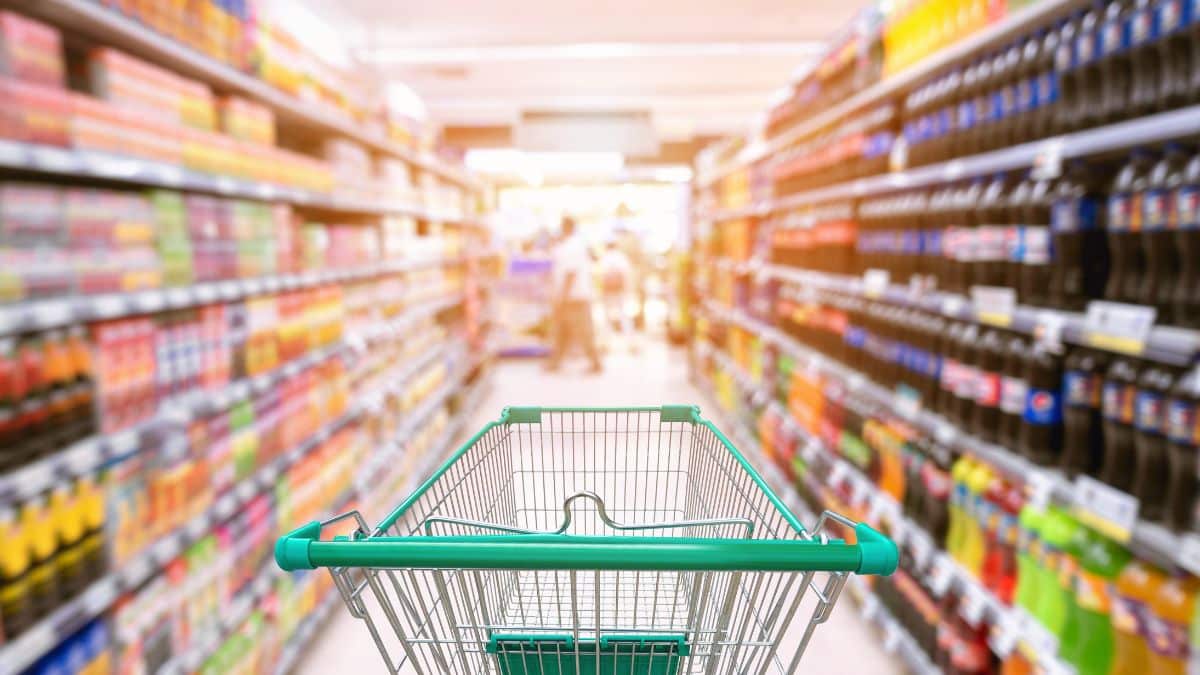Have you noticed fewer chocolates in your tin or less toothpaste in the tube? You’re not losing your mind – that’s shrinkflation at work.

It’s when companies quietly make products smaller without lowering the price. Sometimes they even swap ingredients for cheaper ones – a sneaky trick called skimpflation.
A recent study by Which? shows just how bad it’s become, with everything from chocolate bars to porridge oats shrinking in size while prices continue to rise.
Get a £10 bonus with Swagbucks
Earn a bit of extra money in your spare time with surveys, videos, and simple tasks you can do at home.
New users can get a £10 bonus when they sign up.
Get the £10 bonus
Chocolate lovers hit hardest
Chocolate prices have shot up globally because of poor cocoa harvests, and big brands are quietly passing the cost on to shoppers.
- Quality Street tubs have shrunk from 600g to 550g at Morrisons, yet the price has gone up from £6 to £7. That’s a 27% increase per 100g.
- Freddo multipacks are down from five frogs to four, with no price change.
- Cadbury Fudge bars are also now four instead of five – a 25% jump per finger.
- Kit Kat multipacks have gone from 21 bars to 18, while the price leapt from £3.60 to £5.50 at Ocado – meaning each bar costs 53% more.
- Even the Terry’s Chocolate Orange Toffee Crunch has slimmed from 152g to 145g, still priced at £2.
Everyday essentials shrinking too
Shrinkflation isn’t limited to treats. Household staples and health products are also getting hit.
- Aquafresh toothpaste went from 100ml to 75ml, and the price jumped from £1.30 to £2 – that’s a 105% rise per 100ml.
- Gaviscon Liquid fell from 600ml to 500ml, but the price stayed at £14 – effectively 20% more.
- Sainsbury’s Scottish oats halved from 1kg to 500g, yet the price increased from £1.25 to £2.10. That’s a shocking 236% rise per 100g.
- Even Nescafé Original coffee shrank from 200g to 190g at several supermarkets – another quiet 5% rise per 100g.
Cheaper ingredients, same price tag
Skimpflation is the other half of the problem – when the ingredients get cheaper, but the price doesn’t budge.
Which? found some well-known brands now use less cocoa butter or more palm oil, meaning they can’t even be sold legally as “chocolate” any more.
- White Kit Kats now contain less than 20% cocoa butter.
- Penguin and Club bars contain more palm oil and shea oil than cocoa.
- McVitie’s White Digestives don’t include any cocoa butter at all.
How much are prices really rising?
According to Which?’s food and drink inflation tracker, grocery prices rose 5.2% in the year to August 2025, but chocolate saw the sharpest rise at 14.6%. Biscuits were up 8.4%, and cakes and cookies followed closely behind at 7.2%.
What you can do about it
Shrinkflation can be hard to spot, but there are a few ways to protect your budget:
- Check the unit price. Always look at the price per 100g or 100ml, not just the total.
- Be cautious of ‘new’ labels. Sometimes this just means the product has quietly changed size.
- Compare supermarket brands. Store brands often keep sizes consistent and can save you a few quid.
- Use tools like Trolley.co.uk to track price changes over time.
Reena Sewraz from Which? said: “Households are already under immense financial pressure with food bills inching up and Christmas around the corner, so it feels especially sneaky when manufacturers quietly reduce pack sizes or downgrade ingredients.”
She urged supermarkets to make unit pricing clearer so shoppers can easily compare value.
Why it’s happening
Manufacturers say they’re facing huge costs. Cocoa and dairy prices are at 45-year highs, energy and transport remain expensive, and taxes on packaging have increased.
Mondelez (which makes Cadbury) said size changes were a “last resort”, while Nestlé said it’s trying to balance “quality, affordability and sustainability”.
But for most of us, it just means we’re paying more for less – and that hurts.
Final thought
Shrinkflation and skimpflation might sound like boring buzzwords, but they’re quietly eating into our budgets every week. Until labels become clearer, the best defence is to stay alert, compare prices, and make sure you’re actually getting what you pay for.
Saved a few quid with our tips?
If Skint Dad has helped you spend less or feel more in control of your money, you can support the site with a small contribution.
- Asda Christmas scan to win 2025: how it works (and how not to miss a prize) - 16 December 2025
- Santa judges on parental income – and that pressure is breaking good parents - 16 December 2025
- Why a skill makes a better Christmas gift - 16 December 2025
